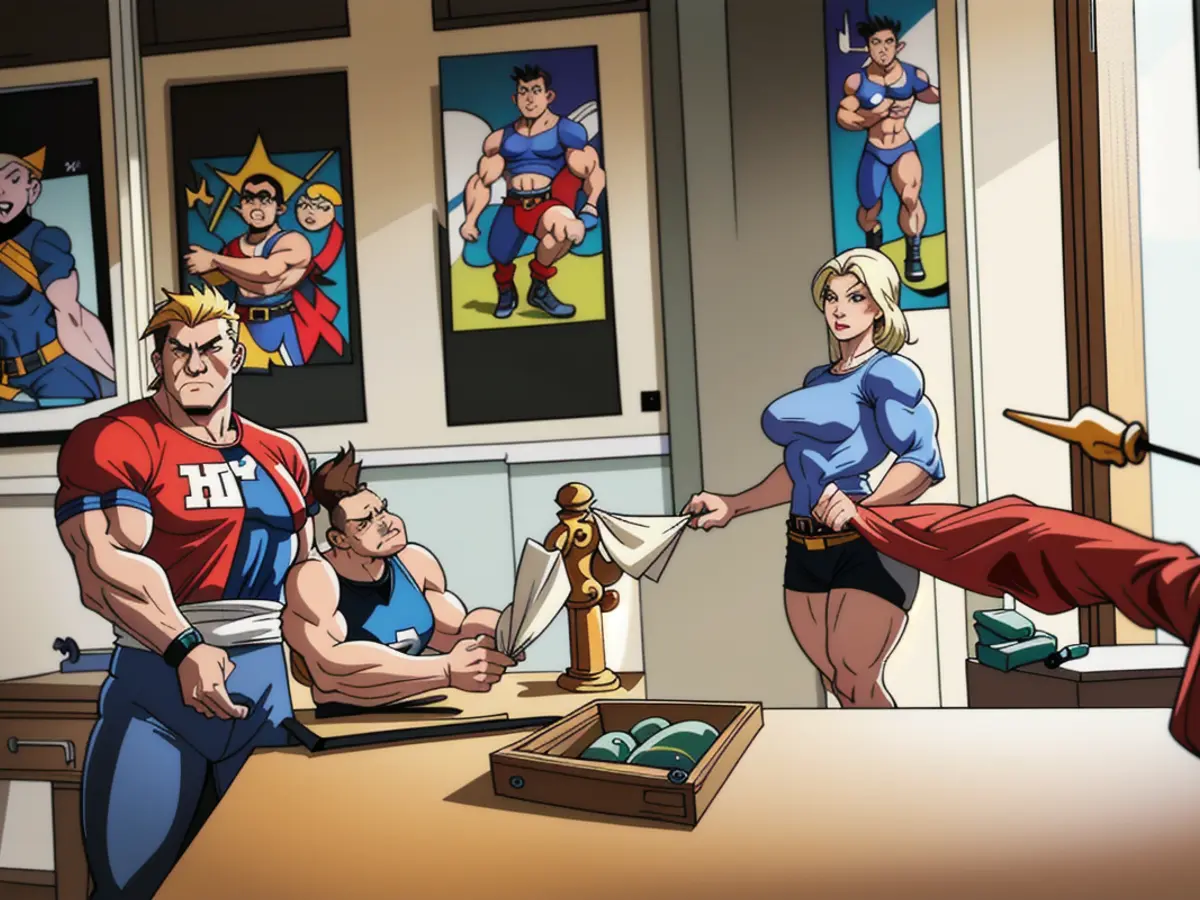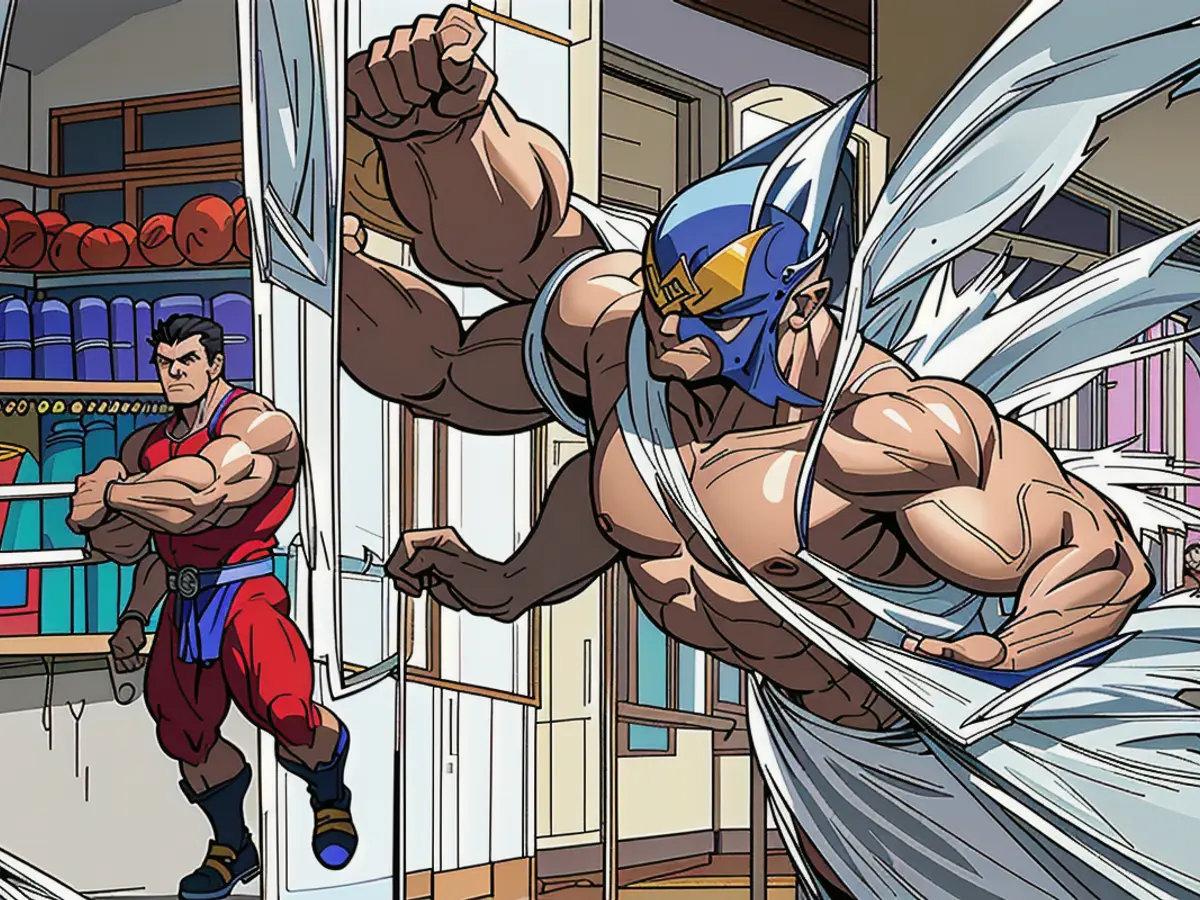Self-Promotion in Art: Balancing Tradition and Modern Techniques
Kolja Brand, a distinguished art marketing innovator, stays ahead in the evolving art sphere with the German Art Award and his artist agency, Aurum Future.
The global art scene is undergoing a revolutionary shift, breaking traditional barriers and norms.
In the past, a degree from elite art academies was virtually required to be recognized as a visual artist. This often involved substantial investments, typically ranging from five to six figures. Today, however, platforms like Instagram have opened up the once closed-off industry, infusing it with openness and accessibility.
Art's Digital Transformation
Never before have non-academically trained artists had such strong tools to reach vast, global audiences. By crafting a potent visual language, exhibiting a distinctive personal style, and effectively promoting themselves, these artists can soon attract a substantial following.
According to a study by Art Basel and UBS, despite a general slowdown in the global art market, the volume of art sales continues to grow, especially on digital platforms[0][7]. Sites like Singulart, for instance, consistently sell around 2,000 artworks each month, with an average price range of $2,000 to $3,500 per piece[7].
The Rise of Independent Artists
The shifting landscape often poses the question of how essential an academic degree remains. While prestigious art academy graduates can still benefit from exclusive networks, competitions, and galleries, more and more artists without formal training are gaining recognition through social media. Essentially, self-marketing and online reach have challenged many traditional gatekeepers.
Challenging Traditions in Galleries and Art Academies
Some art circles still argue that only academically trained artists produce "real" art. However, this narrow view is being met with growing criticism as more and more universities limit their art prizes to registered students or graduates. Additionally, certain galleries still primarily work with academy-trained artists.
Meanwhile, the weight of this belief that artistic quality is tied to institutional credentials appears to be waning, as the balance of power shifts once more.
In the past, galleries controlled artists' careers, particularly where high-priced art was concerned. However, that monopoly on visibility has now been broken. Through skillful marketing, personal branding, and strategic collaborations–be they with interior designers, luxury labels, or influencers–artists can now succeed independently, even if galleries remain a vital bridge between artists and collectors[8].
The Role of Art Education: Cost/Benefit Analysis
Attending an elite art academy can quickly become a significant financial investment. Graduate programs often come with six-figure price tags, making them unattainable for many. Nevertheless, attending an elite art academy still offers advantages such as direct exposure to high-profile exhibitions, access to prestigious awards, and networking opportunities. Additionally, students are often provided with comprehensive education in art history, technique, and multidisciplinary projects.
However, formal education programs seldom provide instruction in crucial areas like marketing, sales, and personal branding. As a result, young creatives are turning to specialized art marketing courses, online seminars, and mentor-led training programs to learn these essential skills beyond academia.
The Future of Art
Fewer artists will rely solely on academic certificates in the future. Instead, the ability to build a compelling brand and establish a strong network will become increasingly important.
Galleries and collectors may no longer focus on artists' academic achievements, so long as they see an emerging artist with a dedicated following. A hybrid approach is emerging: traditional galleries value the reach that social media can offer, while artists learn to tap into established events and awards strategically.
The most successful artists of the future will be those who master the delicate balance between creative talent and business acumen. Although a degree can serve as a stepping stone, initiative is ultimately the key factor for success.
Self-Marketing Strategies for Artists
From Artist to Art Entrepreneur
Cultivating a business mindset is crucial for budding artists, as financial stability often depends on more than just talent.
Myths persist around talented managers who lead unknown artists to success. However, many aspiring artists must learn marketing and sales skills for themselves.
Creating a professional presentation–from an attractive website to high-quality images and targeted social media posts–is the foundation for all self-marketing efforts.
Establishing a Network and Collaborations
Collaborating with renowned luxury brands, interior design firms, hotels, and jewelers can provide notable opportunities. Organizing events, exhibitions, and pop-up shows is also an excellent way to increase visibility. Above all, a distinct artistic brand– featuring recognizable themes, concepts, and values–sets artists apart from the masses.
Embracing Sales
Few artists seek someone else to handle sales, but such arrangements are rare. To make it in the art world, you must learn how to generate leads, close deals, and negotiate effectively. Introverted artists can also learn these skills with dedication and practice. Stepping out of comfort zones is part of the journey.
Ultimately, success in the art market doesn't come overnight, but those willing to take marketing and sales as seriously as their brush and palette have a better chance today than ever before.
In a Nutshell
The art market is undergoing profound changes, thanks to social media and e-commerce platforms democratizing the art world and challenging traditional academies and galleries. Except for certain advantages such as access to prestigious events and networking opportunities, an academic diploma loses importance.
Establishing a compelling personal brand through marketing and sales skill, along with building a robust network, has become the key to a thriving art career for many artists, regardless of whether they have a diploma or not.
Successful art is born when creativity, talent, and entrepreneurial spirit converge. This ongoing revolution in the art world has the potential to make the industry more sustainable, inclusive, and diverse than ever before.
Our Website Business Council is the leading growth and networking organization for business owners and leaders. Do I qualify?
Enrichment Data:
The impact of social media on the art market can be analyzed in various dimensions, including:
- Creative Communities
- Artists create and share work in private/secure communities on platforms like Behance, ArtStation, and 500px.
- Communities like Reddit's r/Art, Tumblr's Art Blogs, and Pinterest provide inspiration and engage with creators.
- Social Media Influencers
- Art influencers on social media platforms like Instagram, TikTok, and YouTube provide tutorials, demos, and inspiring work.
- Prominent figures like Bob Ross, Jake Parker, and Draw with Jaz are inspiring new generations of artists.
- Collaborations between artists and influencers can lead to wider reach and inspiration.
- Online Marketplaces
- Platforms like Etsy, Fine Art America, Art.com, Saatchi Art, and Shopify provide artists with niche and general online marketplaces.
- These marketplaces allow artists to sell their artwork, prints, and merchandise without the need for an agent or gallery representation.
- Learning and Connection
- Online platforms like Coursera, Skillshare, LinkedIn Learning, Udemy, and MasterClass offer a wealth of art-related courses, tutorials, and workshops.
- Social media and online platforms connect artists with each other, clients, galleries, agents, and art exhibitions.
- Art Contests and Challenges
- Online platforms like Instagram, Reddit, and Behance often host art contests and challenges, which can lead to massive exposure and even paid collaborations.
- Digital artists often participate in platforms like Artstation Challenges, CG Society Challenges, or Blender Artists, which can result in gaining attention from large studios and companies.
In the rapidly evolving art market, Kolja Brand's innovative approach, including his involvement with the German Art Award and his artist agency Aurum Future, continues to set him apart.
As the art world undergoes a digital transformation, non-academically trained artists are increasingly utilizing platforms like Instagram to bypass traditional barriers and reach global audiences.








